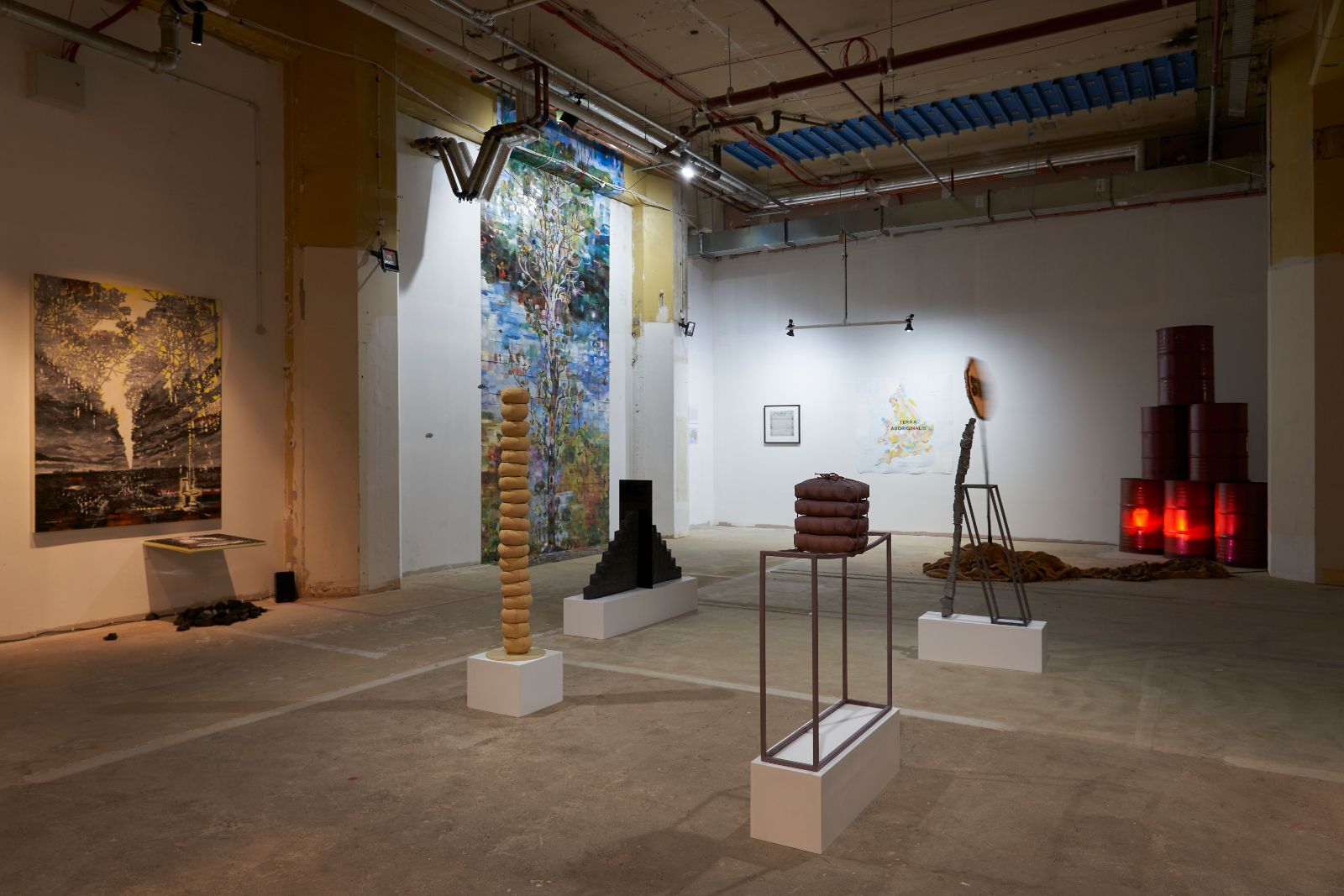
Neoteric: when artists move in
The neoterikoi—the ‘new ones’—were an avant-garde movement of Latin poets who distinguished themselves from the heroic (and Homeric) epics and odysseys of previous generations. In turning away from the didacticism of their predecessors, the Neoterics were producers of vignettes, pursuers of inward-facing aesthetic goals. Their works advocated an emotional immediacy and accessibility—subjects of love, sorrow, pleasure, sex, hatred, contempt—set out not in the abstract realms or allegories of gods and deities but amid the real world politics of late Republic Rome.[1]
The 2022 exhibition Neoteric, which borrows its title from this ancient new wave, is distinguished by its own real world setting—the survey of twenty mid-career South Australian artists was staged in the crumbling arcades of Adelaide Railway Station’s north eastern concourse. Fed by daily commuters and curious passers-by, the exhibition sought a similar visibility. Initiated and developed by Thom Buchanan and Ray Harris, and curated by Julianne Pierce, Neoteric was conceived as an ‘artist-led, artist-focused initiative working outside establishments’, particularly for those without current gallery representation, yet who find themselves more than a decade deep into their career.
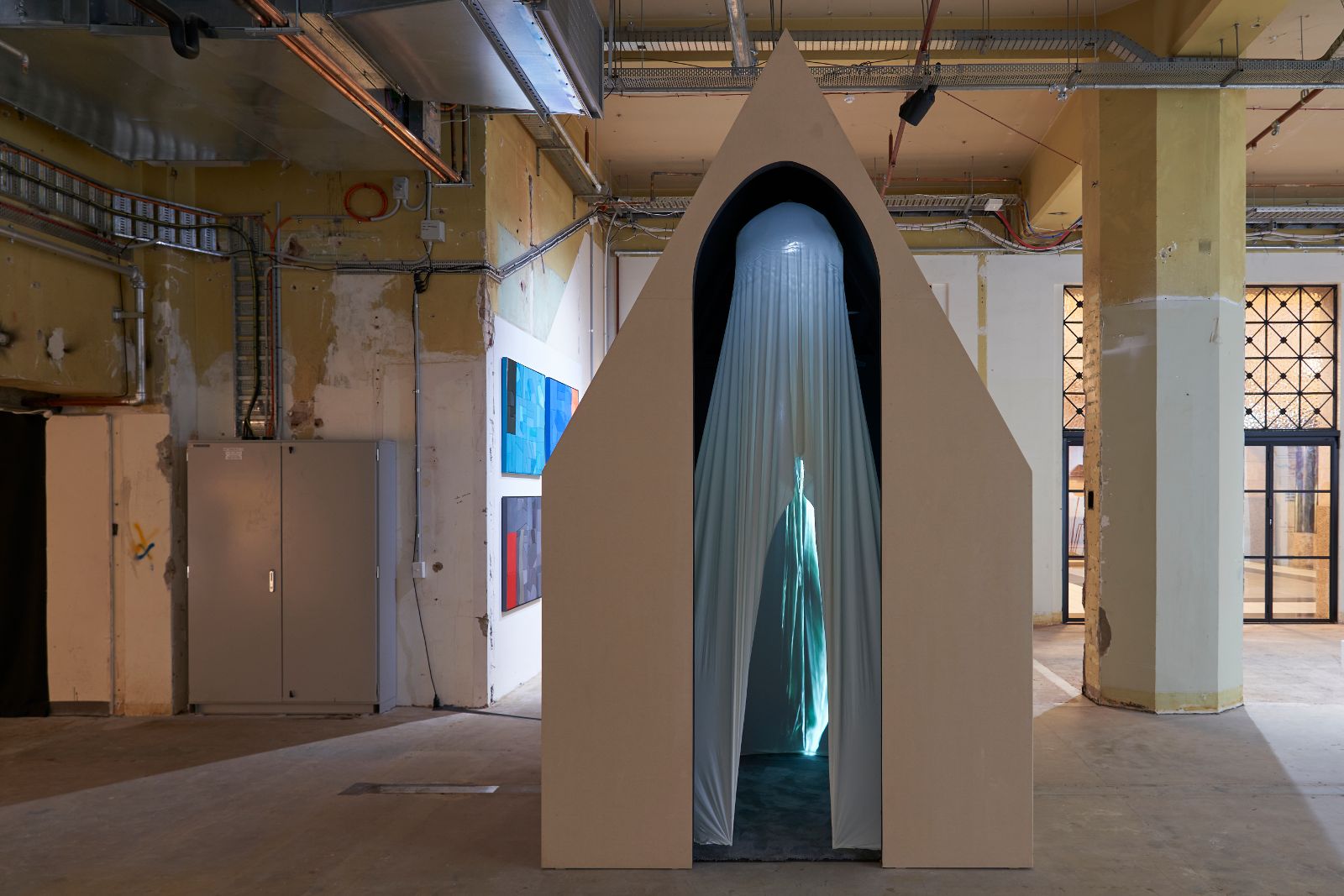
Neoteric’s decentralised curatorial premise, insofar as there is no singular thematic propelling this next new wave, dovetails with an exhibition spatially defined by transience. It is set against a moving backdrop of trains coming and going; time is marked by waves of activity then silence, and the temporarily repurposed space is rich with signs of its previous life—a vaulted ceiling of exposed industrial ducting, piping and wiring, hefty pylons and degraded, pock-marked concrete walls. Neoteric is a momentary occupation. So, what happens when artists move in?
The works best suited to such an open-ended space and premise are those that are most materially present. Anna Horne’s cast concrete sculptures—Purple Haze, Stairs to Nowhere (2022)—sound off against their post-industrial surrounds, impossibly puffy in their soft-edged geometry and futile minimalism. Walking with Ouroboros (2022) in particular, a precarious tower of stacked concrete pillows, captures the material trickery of casting—an object shaped equally by presence and absence, as does Honor Freeman’s and the tide rises, the tide falls (2022). The unexpected landing of an enamel bathtub, propped up by cast stoneware Besser blocks and laden with stacks of the artist’s signature porcelain soap slivers, forms another neoteric moment: a vanitas, the mundane immortalised.
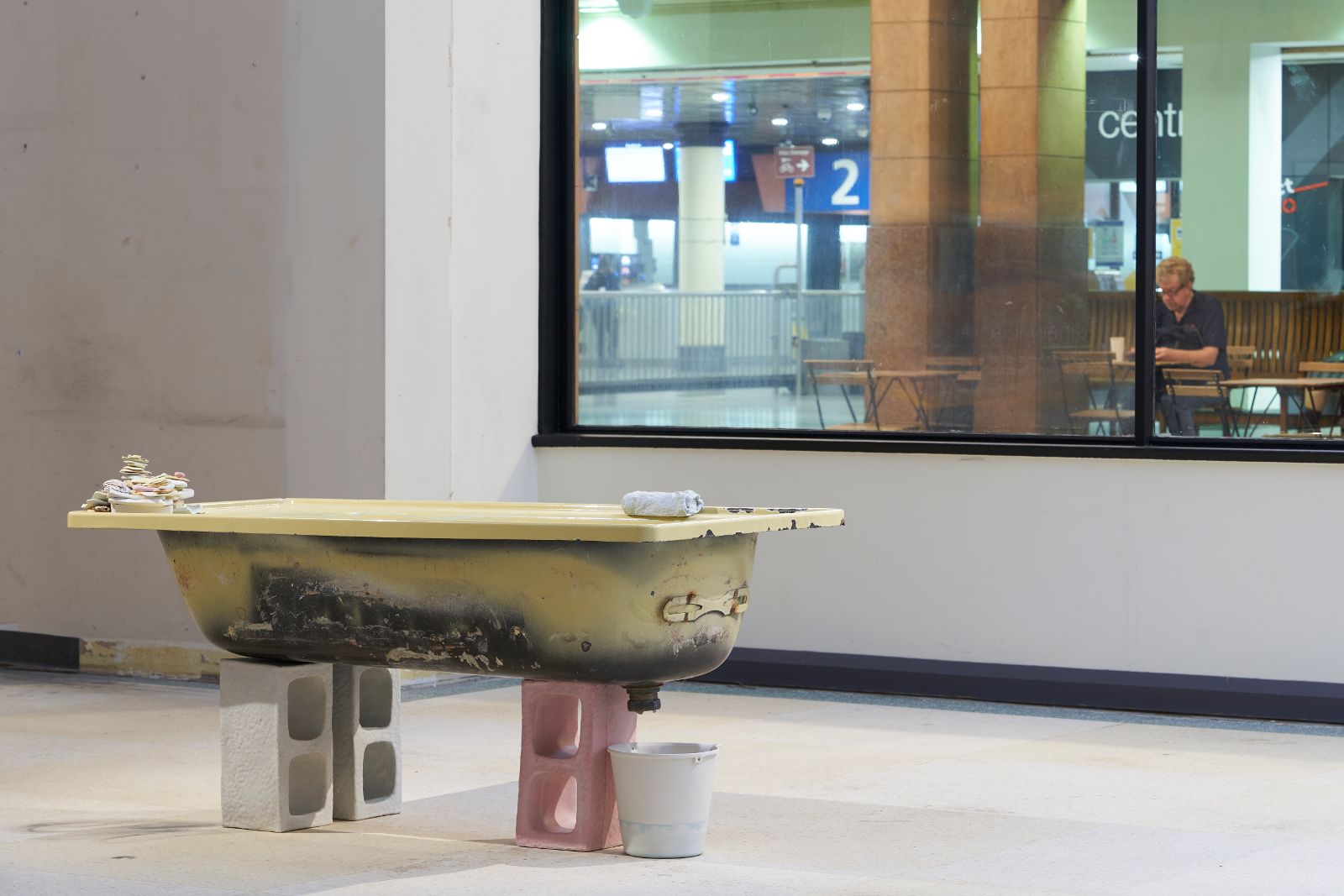
Casting continues with Sue Kneebone’s Pyrolysis (2022). Her ciment fondu hard hats, hanging from nineteenth-century brass curlicues and bejewelled with candelabras, banksia serrata and hewn chunks of quartz crystals, appear as an apparition. They offer a kind of eco-feminist incantation, rebuking an idle leadership against a backdrop of fires and floods that have ravaged the country throughout the current federal electoral term. Current Affairs Tableau Vivant (2021–22), by Cynthia Schwertsik and Dave Laslett, pulsates with a similar witchy energy. The seven-minute film is an exercise in the uncanny. Schwertsik, seen perched at a jaunty angle in the boughs of an ancient eucalypt, is dressed in an unseasonal kangaroo fur, her hair moving out of synch with the night scene around her. A river flows strangely too, up the length of the tree trunk. Although beguiling and light in its staging, the film’s displaced rules of nature are unnerving. The detritus of tree-bark and bush-fire salvaged chairs installed at the feet of the moving image adds to—or perhaps distracts from—the mnemonic omen, a vicious trick performed on us historically; it’s one we continue to perform as we move deeper into the Anthropocene.
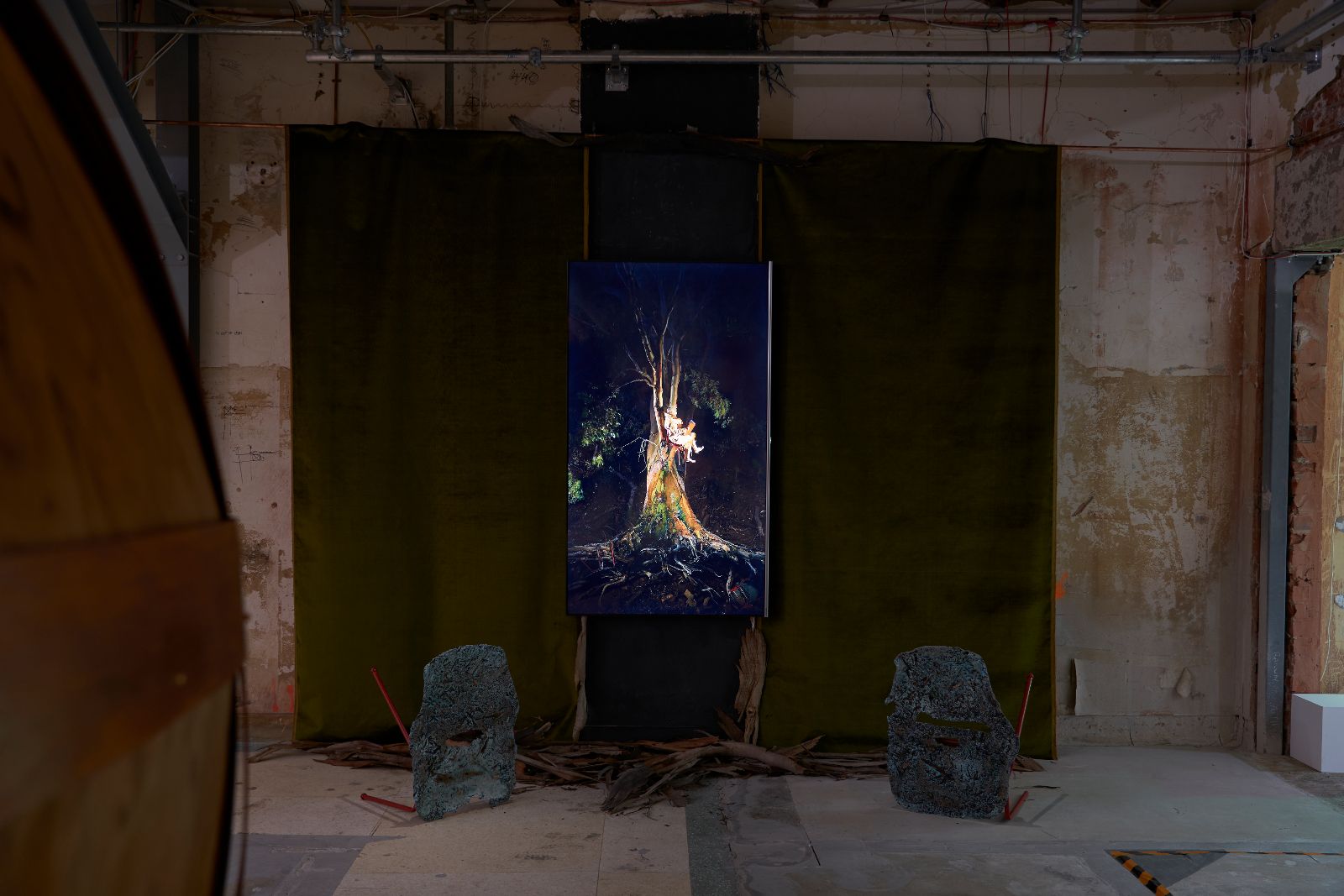
A number of Neoteric artists deal with this timely intersection of place, ecology and history. Darren Siwes re-maps the archive in counter-colonising fashion; Lara Tilbrook performs an ongoing eulogy to Kangaroo Island; even the ouroboros reappears as a prophetic death adder in CJ Taylor’s video triptych. The intersection, however, finds its crescendo in Sasha Grbich’s Bat Alphabet 40° (2022). Developed over the past two years, Grbich’s wall installation of cryptic hand-shaped ceramic forms takes a cue from the fallen bodies of flying-foxes, a phenomenon observed throughout the grounds of the Adelaide Botanic Gardens and Botanic Park during the peak heat of summer. A seasonal tragedy, the threatened species (who are bearers of their own ecological tragedies), is divined by Grbich’s intuitive forms. Her encoded alphabet is translated into a musical score by cellist and composer Zoë Barry, read as a language by Barry’s young daughter and by deaf interpreter Marijana Turcinov. The evocative performance on the exhibition’s closing night brought a ritual element to the layered work in which all three interpretations reveal distinct yet perceptive worlds of free association; meaning is momentarily lost and found between translations.
Grbich’s hieroglyphs also perform an important conceptual triangulation for Neoteric. In transporting us to Adelaide’s parklands, bridging the eastern and western ends of North Terrace, Neoteric is re-centred; it is deeply of place. The exhibition takes on an unofficial relationship to Free/State, the 2022 Adelaide Biennial of Australian Art concurrently fronting North Terrace. Read as a collateral exhibition, Neoteric champions the strengths and resilience of the South Australian independent art scene against this wider national dialogue.
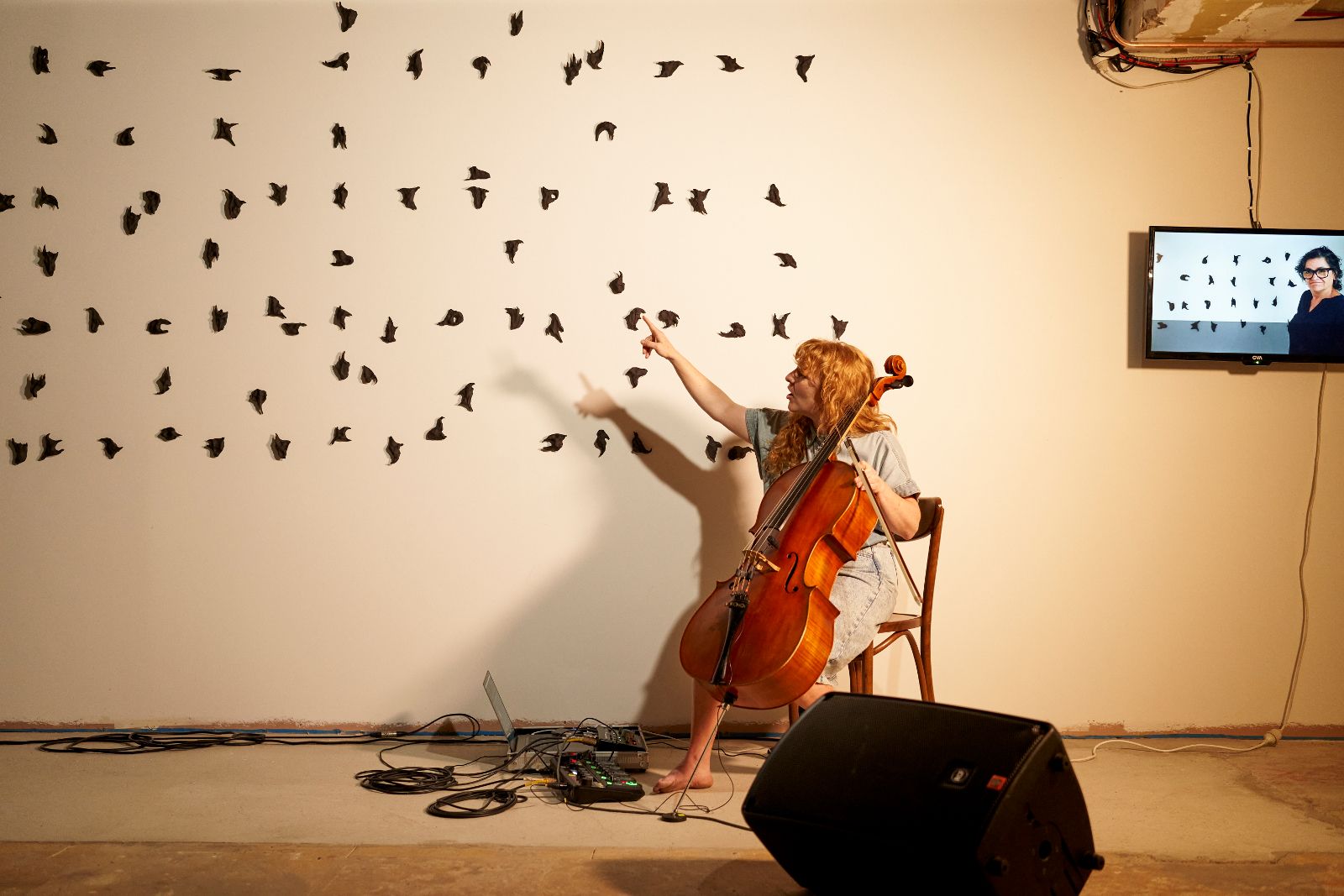
This position is galvanised by the fact that Neoteric is not just about art, but art writing too. Each Neoteric artist was paired with a South Australian writer (often doubling as artists themselves), resulting in a forty-strong assembly of multi-skilled practitioners. Harris and her team were purposeful in uniting writers and artists with little to no prior experience of working together. This kind of cross-pollination is not just testament to the breadth of talent currently working in South Australia but flies in the face of broader existential crises felt by art writers across the country and indeed the globe. The result is an exhibition and catalogue that captures this spirit, the neoteric spirit. Every vignette is a portal, a transitory look into the practices of South Australia’s new wave.[2]
Footnotes
- ^ Julia Haig Gaisser, “Introduction: The Young Poet in Rome,” in Catallus, (New Jersey: Wiley-Blackwell, 2009), 1-21.
- ^ For a full list of exhibiting artists, writers and collaborators see the Neoteric catalogue: https://www.neotericexhibition.com/about
